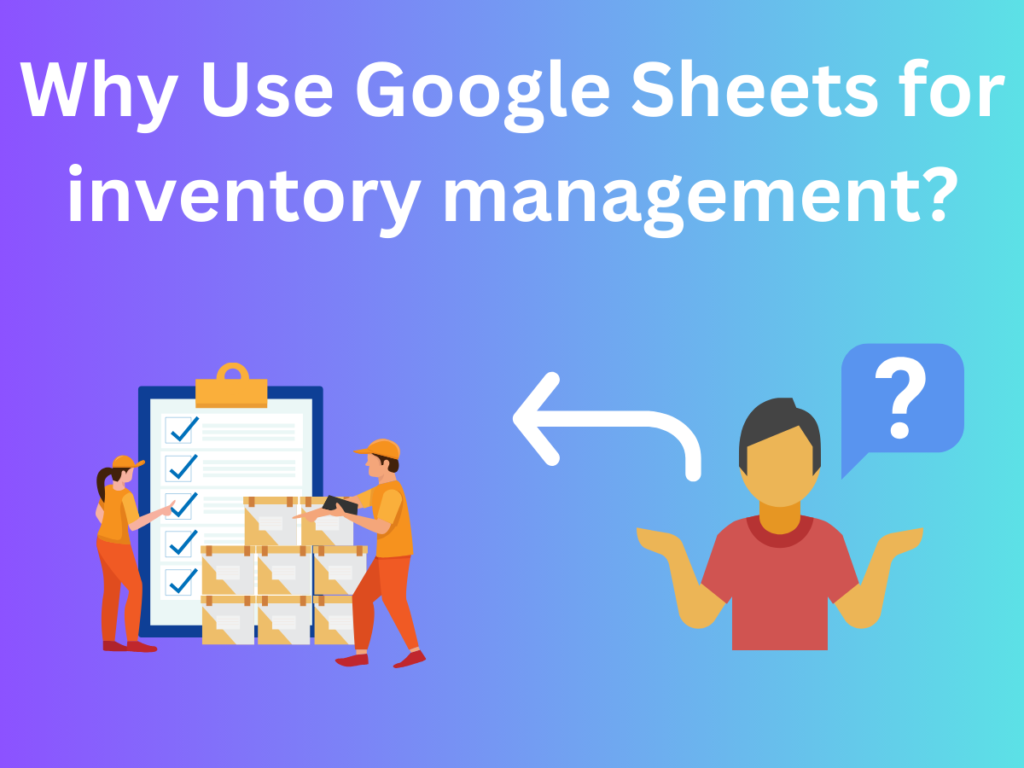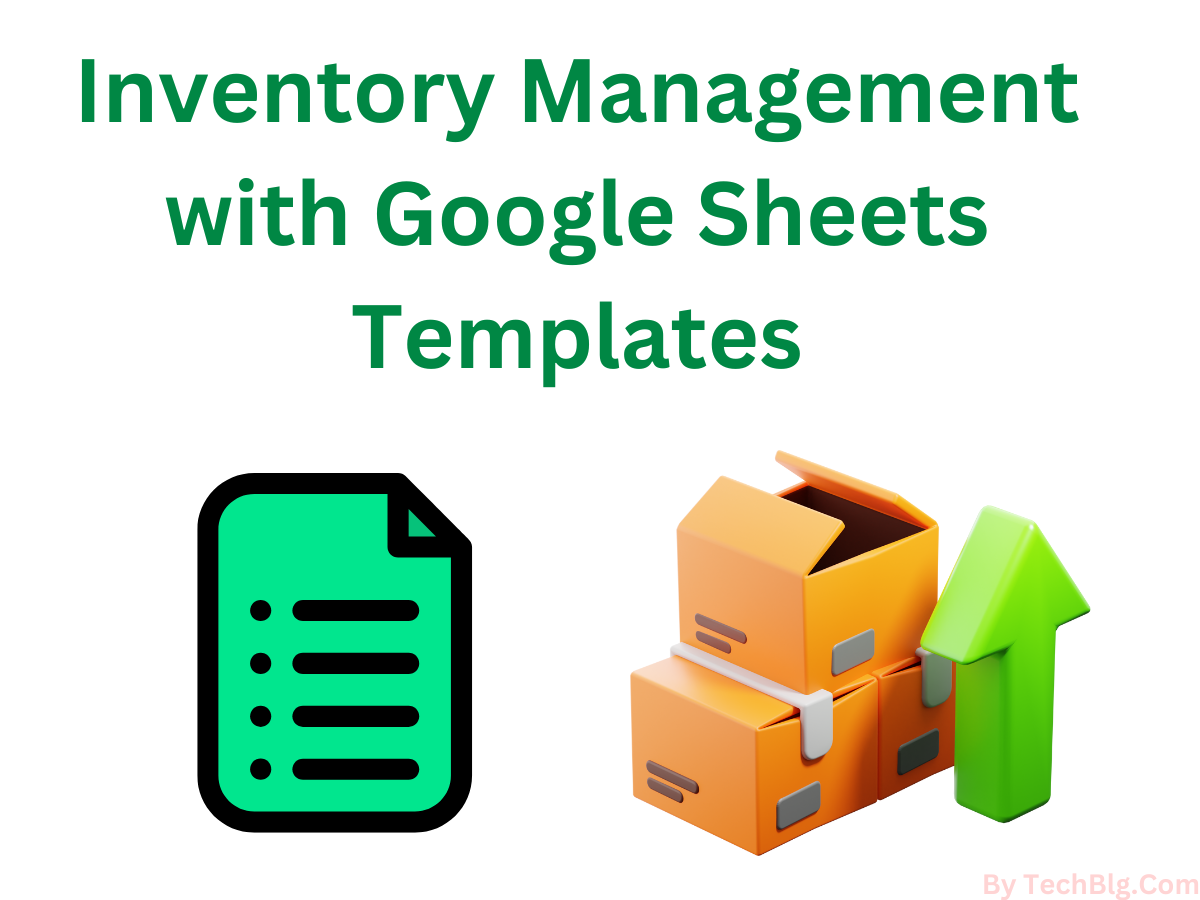Inventory management with google sheets templates is a critical aspect of running a successful business. For entrepreneurs and small business owners seeking a cost-effective solution, Inventory Management with Google Sheets Templates is a game-changing option. With this powerful yet simple tool, you can streamline your inventory processes, avoid stockouts, and make informed decisions to grow your business.
In this comprehensive guide, we’ll explore how you can use Google Sheets templates for inventory management, their benefits, and how to implement them effectively. We’ll also cover the common challenges businesses face and provide actionable solutions to overcome them. This article is designed to help you master inventory management while optimizing for search engines to reach the audience that needs this information.
What is Inventory Management?
Inventory management refers to the process of ordering, storing, and utilizing a company’s inventory. It encompasses everything from raw materials and components to finished goods. Proper inventory management ensures that businesses have the right quantity of items at the right time, reducing the risks of overstocking or understocking.
For small businesses, managing inventory can be challenging due to limited resources. That’s where Google Sheets templates come in, offering a low-cost and highly customizable solution. Let’s delve deeper into how these templates work and their advantages.
Benefits of Using Google Sheets for Inventory Management

Google Sheets is a versatile tool that provides several advantages for managing your inventory:
Description
1. Cost-Effectiveness
Unlike expensive inventory management software, Google Sheets is free to use. This makes it an ideal choice for startups and small businesses with tight budgets.
2. Accessibility
Google Sheets is cloud-based, allowing you to access your inventory data from anywhere with an internet connection. This feature is especially useful for businesses with remote teams.
3. Real-Time Collaboration
With Google Sheets, multiple users can collaborate in real-time. This ensures that everyone on your team is working with the latest inventory data.
4. Customizability
You can tailor Google Sheets templates to fit your specific inventory management needs. From tracking stock levels to calculating reorder points, the possibilities are endless.
5. Integration with Other Tools
Google Sheets integrates seamlessly with other tools like Google Analytics, Zapier, and various e-commerce platforms. This allows you to automate tasks and improve efficiency.
How to Create an Inventory Management System with Google Sheets Templates
Step 1: Identify Your Needs
Before you start, determine what you want to achieve with your inventory management system. Do you need to track stock levels, monitor sales, or calculate reorder points? Having a clear goal will help you choose the right template and customize it effectively.
Step 2: Choose a Google Sheets Inventory Template
Search for a Google Sheet inventory template that matches your requirements. Many free and paid options are available online. Look for templates that include features like stock tracking, low-stock alerts, and automated calculations.
Step 3: Customize the Template
Once you’ve chosen a template, customize it to suit your business needs. Here are some elements you may want to include:
- Product ID and Name: Unique identifiers for your inventory items.
- Stock Levels: Columns to track the current quantity of each item.
- Reorder Points: Minimum stock levels that trigger a reorder.
- Supplier Information: Details of your suppliers for quick reference.
- Sales Data: Fields to record sales and monitor trends.
Step 4: Input Your Inventory Data
Enter your existing inventory data into the template. Ensure accuracy by double-checking your entries. If you’re transitioning from another system, take the time to clean up your data to avoid discrepancies.
Step 5: Automate Calculations
Google Sheets allows you to use formulas to automate calculations. For instance, you can set up formulas to calculate:
- Total inventory value
- Days of inventory remaining
- Reorder quantities
Step 6: Regularly Update Your Data
Inventory management requires consistent updates. Assign someone on your team to update the Google Sheet regularly with new stock arrivals, sales, and other changes.
Key Features of a Good Google Sheet Inventory Template
When selecting or designing a Google Sheet inventory template, ensure it includes the following features:
1. Stock Level Tracking
A simple interface to monitor the quantity of each product in your inventory.
2. Low-Stock Alerts
Conditional formatting or automated emails to alert you when stock levels are low.
3. Reorder Point Calculations
Formulas to determine when it’s time to reorder based on your average sales and lead times.
4. Sales and Trends Analysis
Charts and graphs to visualize sales trends and predict future demand.
5. Integration Options
Compatibility with other tools and platforms for a seamless workflow.
Common Challenges in Inventory Management and How Google Sheets Helps
Challenge 1: Data Accuracy
Manual inventory tracking can lead to errors.
Solution: Google Sheets allows you to use dropdown menus, data validation, and formulas to minimize mistakes.
Challenge 2: Stockouts
Running out of stock can disrupt your operations and lead to lost sales.
Solution: Use low-stock alerts and reorder point formulas in your Google Sheet inventory template.
Challenge 3: Overstocking
Excess inventory ties up capital and storage space.
Solution: Monitor sales trends and adjust your reorder points accordingly.
Challenge 4: Scalability
As your business grows, managing inventory becomes more complex.
Solution: Regularly update and refine your Google Sheets templates to accommodate your growing needs or integrate with more advanced tools as required.
Advanced Tips for Using Google Sheets for Inventory Management
Tip 1: Use Conditional Formatting
Highlight low-stock items or expired products with conditional formatting. This makes it easier to spot issues at a glance.
Tip 2: Leverage Add-Ons
Google Sheets has several add-ons that can enhance its functionality. For example, you can use add-ons to generate barcodes or automate data entry.
Tip 3: Create Dashboards
Design a dashboard in your Google Sheet to provide a visual overview of your inventory, sales, and other key metrics.
Tip 4: Automate Data Entry
Use tools like Google Forms or Zapier to automate data entry and reduce manual work.
Tip 5: Backup Your Data
Regularly back up your Google Sheet to prevent data loss. You can use Google Drive or export the file to Excel for safekeeping.
Faq About Inventory Management with Google Sheets Templates
What is a Google Sheet inventory template?
Can I use Google Sheets for inventory management for free?
Are there any limitations to using Google Sheets for inventory management?
How do I customize a Google Sheet inventory template?
Can Google Sheets integrate with other tools for inventory management?
Conclusion
Effective inventory management is crucial for the success of any business. By using Google Sheets templates for inventory management, you can streamline your processes, save costs, and make data-driven decisions. Whether you’re a small business owner or an entrepreneur, leveraging the power of Google Sheets can transform the way you manage your inventory.
Start by choosing the right template, customizing it to your needs, and maintaining accurate data. With consistent effort and the tips provided in this guide, you’ll be well on your way to mastering inventory management. Don’t underestimate the simplicity and effectiveness of Google Sheets sometimes, the best solutions are the ones you already have at your fingertips.
also you can read more about: Budget Management with Google Sheets Templates And The ultimate Google Sheets Guide for small businesses.

Leave a Reply